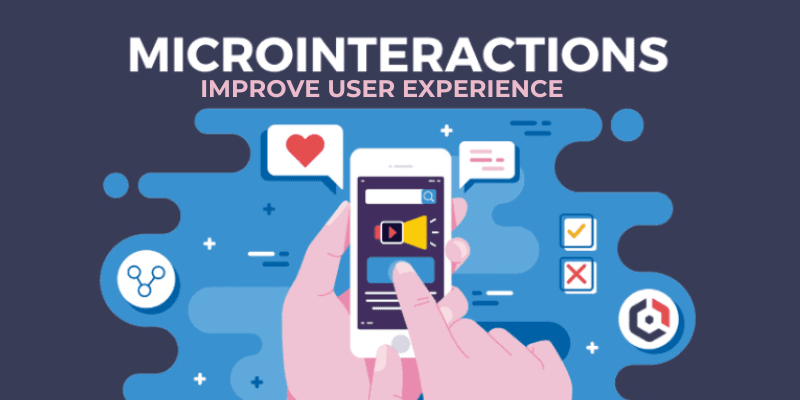
Microinteractions are the subtle, small-scale interactions within a product that play a significant role in shaping user experience. Though often overlooked, these moments provide essential feedback, guide user behavior, and enhance engagement. By incorporating thoughtful animations, sounds, or responses, microinteractions create intuitive and enjoyable experiences. They contribute to a more cohesive, memorable, and emotionally satisfying interaction with users. Joining in UI UX Design Course in Gurgaon offering certification programs and career placement support.
What Are Microinteractions in User Experience?
Microinteractions refer to small, subtle moments within a product or service that enhance the overall user experience. These moments often involve single tasks, like liking a post, toggling a setting, or receiving a notification. While microinteractions may seem insignificant on their own, when done right, they contribute to a smooth, engaging, and intuitive user experience. These interactions are designed to respond to user actions with immediate feedback, creating a sense of responsiveness and interactivity that keeps the user engaged.
The Role of Microinteractions in Enhancing Engagement
Microinteractions play a crucial role in improving user engagement by providing users with immediate, satisfying feedback. For instance, when a user completes an action, like pressing a button or submitting a form, the product responds with a visual cue—such as a subtle animation, a change in color, or a sound. These visual and auditory cues offer validation, ensuring users feel confident that their actions have been recognized. By adding these elements, microinteractions help users feel in control and more likely to continue engaging with the product. Enrolling in the UI UX Design Course in Delhi helps designers comprehensively understand the UI/UX design process.
Building Emotional Connections Through Microinteractions
One of the key benefits of microinteractions is their ability to foster emotional connections with users. When well-designed, these small interactions can evoke positive emotions, such as delight or satisfaction. For example, a playful animation or a personalized message after completing a task can create a sense of accomplishment. These emotional touches elevate the experience, making it more memorable. As a result, users are more likely to return to a product or service that consistently provides enjoyable, emotionally satisfying interactions.
How Microinteractions Guide User Behavior
Microinteractions also serve as effective tools for guiding user behavior within a product. A well-placed animation or visual cue can draw attention to important features or functions, subtly guiding users through tasks. For example, a small animation might draw attention to a newly added feature, prompting users to explore it. This guidance can help users learn the product faster without overwhelming them with complex instructions. By focusing on intuitive design and feedback, microinteractions streamline navigation and ensure that users don’t get lost or confused within the interface.
Also Check: What Role Does Prototyping Play in the UI UX Design Process?
Improving Usability with Microinteractions
In terms of usability, microinteractions are essential for simplifying complex tasks and making interactions feel more intuitive. When users complete an action, such as filling out a form, a progress indicator or a clear confirmation message can provide reassurance that they’re on the right path. Microinteractions offer real-time feedback, reducing frustration by preventing errors and guiding users toward success. For example, when submitting a form, a button might briefly change to indicate whether the data was correctly inputted or if there was an error, ensuring users know how to proceed without confusion.
The Impact of Microinteractions on Accessibility
Microinteractions can also improve accessibility by offering diverse ways for users to interact with a product. For users with disabilities, simple animations and visual cues can provide helpful feedback or guidance. For example, color changes, icons, or sounds can be incorporated into microinteractions to ensure users with visual or auditory impairments receive adequate feedback when interacting with the interface. These small adjustments can make the product more inclusive, broadening its reach and improving the experience for a diverse user base.
Creating a Cohesive Brand Identity with Microinteractions
Microinteractions are also a valuable tool for reinforcing a brand’s identity and personality. Through carefully designed animations, sounds, and visual elements, microinteractions can communicate a brand’s tone, whether it’s playful, professional, or minimalist. For example, a banking app might use simple, clean animations to convey trust and security, while a social media app might use more dynamic, colorful interactions to evoke fun and energy. By integrating brand elements into these moments, microinteractions help create a consistent and cohesive experience that aligns with the brand’s values and style. Explore UI UX Design Course in Kolkata to enhance your abilities in UI UX design.
The Future of Microinteractions in UX Design
As user expectations evolve, microinteractions are becoming more sophisticated and integral to UX design. With the rise of new technologies like artificial intelligence and augmented reality, microinteractions will continue to play a significant role in shaping the user experience. In the future, these small moments will likely become even more personalized, context-aware, and adaptive, further enhancing their ability to engage users and make interactions more intuitive. As the design community recognizes the power of microinteractions, they will undoubtedly continue to evolve to meet the demands of modern users.
Microinteractions are a powerful tool for enhancing user experience by providing feedback, guiding behavior, and fostering emotional connections. They create a seamless, intuitive interface that encourages engagement and retention. Ultimately, well-designed microinteractions contribute to a more enjoyable and effective user experience.
Also Check: Principles Of UX Design For Freshers And Best Tool For UI UX Design
